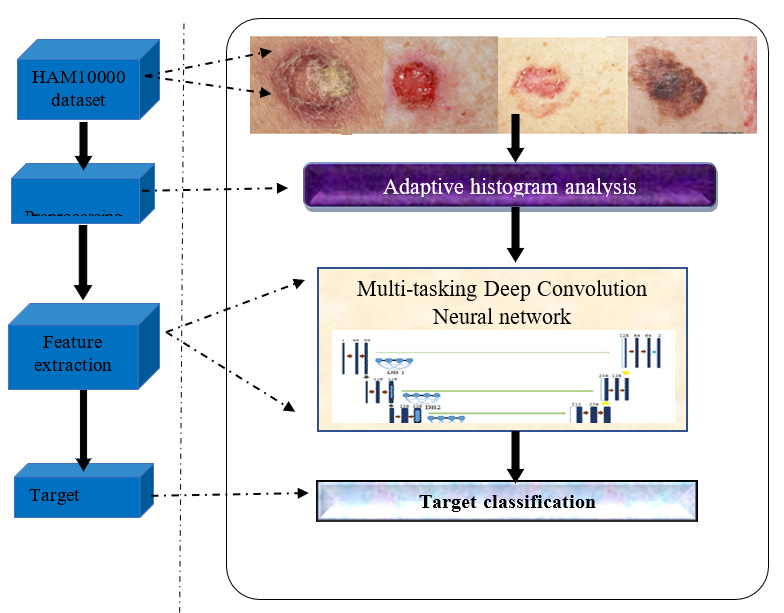
Depletion of ozone molecules in the stratospheric layer surges the flow of ultraviolet (UV) rays on the surface of the earth. Generally, UV rays are the hazardous energy waves emitted from the sun that can cause acute and chronic effects on bio species. Exposure to UV rays in humans causes skin problems such as wrinkles, leathery skin, liver spots, actinic keratosis, and solar elastosis. It is also stated to be a basic premise for skin melanoma. Raising environmental pollution and natural disasters triggered the ozone depletion crisis into global criteria. The proposed work is developed with the intent to analyse the harmful effects of UV radiation on human skin. It detects the skin diseases raised due to UV rays and categorizes them based on chronic intensity using the convolution neural network. The deep learning network Multires U-Net is developed to classify acute and chronic UV skin lesions based on intensity. The proposed technique achieved 95% model accuracy in the testing and training process. Hence the proposed model has better efficiency in the detection of UV lesions.
Total file downloads: 27